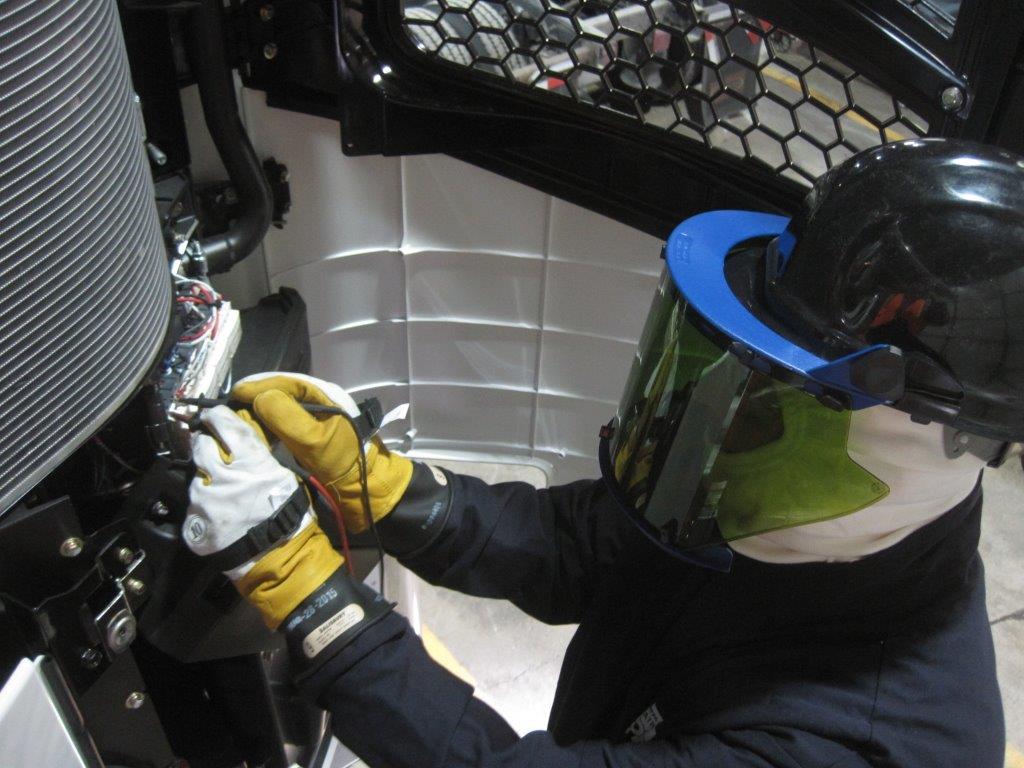Provisions For Arc Flash Safety
Electricity is a part of our everyday lives. Almost everywhere we look; we can see something that is related to electricity. Electricity is such a part of our lives that we often forget about the hazards associated with it. Electricity has the power to shock, burn and cause serious injuries and deaths, as well as cause fires and equipment or structure damage.
The Need For Arc Flash Hazard Safety
Arc Flash, being one such hazard, can occur within an electrical device when an electrical short arcs, causing a blast. Electric arcs can produce temperatures of up to 35,000 degrees Fahrenheit. To put this in perspective, this is four times greater than the temperature on the sun! Arcs in enclosures such as motor control centers or switchgear boxes actually magnify the blast and the energy transmitted. These arcs will often spray the area with molten metal at such a high speed they can penetrate the body. Often the employees clothing will also catch fire, resulting in additional injuries. The pressure alone from the blast has been known to knock workers off ladders and throw employees across entire rooms. The results of this event can be devastating, leading to serious injury or death. In fact, there are over 3000 reported flash burn incidents annually; several of them have been fatal.
Arc Flash Protection Procedures
In an effort to protect employees from arc flash and other electrical hazards it is recommended these steps be followed, in this order:
- Remove the hazard: Turn off the power then perform lock out / tag out procedures.
- Control the hazard: Set up barriers to eliminate contact or arc flash.
- Use required personal protective equipment: Ensure the properly rated gloves, face shields, hearing protection and flame resistant clothing is available and used correctly.
Looking at the above list there are several questions one should ask to determine if employees are protected from electrical hazards including arc flash.
- Is there an established Lock Out / Tag Out program in place?
- Does the program comply with OSHA and NFPA 70 E requirements?
- Have employees had documented training on the program including the use of required PPE?
- Are periodic audits and inspections of the procedures included in the program?
Arc Flash Hazard Safety Programs
Remember, it is very difficult to get shocked if there is no electricity. Using step number one is always the most protective. Remove the hazard by disconnecting the electricity and isolating it through proper lock out/tag out procedures.
If circuits must be worked on live, a flash hazard analysis must be performed to protect both employees working with electrical systems and those simply working or walking in the area. This analysis will then be used to determine the flash protection boundary as well as the required PPE needed to perform work within the boundary. Requirements and guidelines for performing a flash hazard analysis can be found in Ch.1, Sec. 130.3 of the NFPA 70E Standard for Electrical Safety in the Workplace.
It is also required that any control center, panel, switchboard, etc. that may require maintenance, adjustment or servicing while energized be clearly marked to warn qualified personnel of possible electric arc flash hazards.
NFPA (National Fire Protection Association) standards were developed to protect employees under normal conditions. However, too often abnormal conditions, such as exposed electric panels, temporarily wired equipment, and the removal of limit switches and guards, present hazards that are certainly not covered or allowed by these standards.
As one can see, protecting employees and controlling electrical arc hazards takes careful planning. But the time and effort invested in an effective electrical safety program is minimal compared to the time and costs associated with an injury or property damage due to the lack of understanding or lack of protection concerning electrical hazards.








